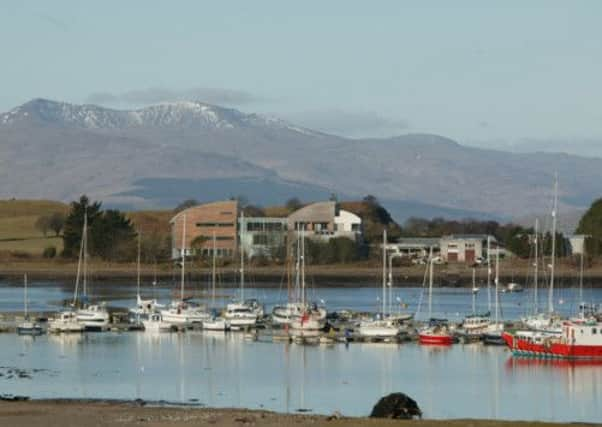Scottish scientists in £20m ocean climate study


The research will involve the establishment of an array of moored data recording devices and the use autonomous underwater “gliders” which will patrol the North Atlantic - from Scotland to Canada - to monitor changes in the ocean temperatures, salinity and the strength of currents for a period of four years, starting next summer.
The study will be focused on the the North Atlantic Subpolar Gyre - a system of ocean currents in the high latitude, deep-water basins of the North Atlantic Ocean. And the aim is to gain a greater understanding of the gyre’s wider impacts on the climate, helping to improve long term climate change predictions and weather forecasting.
Advertisement
Hide AdAdvertisement
Hide AdThe project - Overturning in the Subpolar North Atlantic Program (OSNAP) - will involve scientists from seven countries, including a team from the Scottish Association for Marine Science (SAMS).
SAMS scientists Dr Stuart Cunningham and Professor Mark Inall will be leading the programme monitoring the “warm” water flowing north past Scotland between the Iceland Basin and the Scottish Continental Shelf.
Dr Cunningham explained: “This warm water path from the subtropics to the Nordic Seas has been called a ‘fan-assisted storage heater’ because of its role in maintaining the mild UK and Western European climate some 5 to 10C warmer than other regions at similar latitudes,
such as Siberia.
“However, the strength of this circulation is forecast to slow – perhaps by 25 to 50 per cent over the coming century as Earth’s climate warms. To know if such a slowing is taking place we need the baseline measurements against which to assess future change, and to help interpret forecasts of climate change.”
Professor Inall said: “In the 1970s, long before public awareness of climate change, the visionary actions of SAMS scientist David Ellett lead to the establishment of a regular measurement programme across North Atlantic Ocean. Dr Cunningham’s team at SAMS will refocus our
attention on the role of the North Atlantic in UK climate at a time when climate change is high in the public consciousness.
“The new programme will blend traditional methods with leading edge marine robotic technologies, launched from the Scottish coast, to shed light on this question of the oceans role in UK climate.”
Mike Russell, Scotland’s Education Secretary, welcomed the research project. He said: “This is an excellent example of the important research that Scottish academics and universities are involved in and the contribution we make to international scientific progress.
Advertisement
Hide AdAdvertisement
Hide Ad“The Scottish Association for Marine Science has a long involvement in the study of currents and their effect on the climate.”
The research project is being jointly funded by the UK’s Natural Environment Research Council (NERC), America’s National Science Foundation, and the National Oceanic and Atmospheric Administration.
An NERC spokesman said: “The team is interested in this region because the currents here, which are part of the so-called ocean conveyor belt, are known to be important for the Earth’s climate.
“The conveyor belt is a system of ocean currents, which move heat around in the world’s oceans. In the Atlantic Ocean, warm upper-ocean water travels North, to the high northern latitudes, where it loses heat to the atmosphere. It’s this process that keeps the UK relatively
mild in winter compared to other countries at similar latitudes. This water cools then sinks and returns southwards at great depth.”
He added: “Despite its name, the image of a conveyor belt is misleading, because the process isn’t smooth and continuous. Instead, the belt can stretch, rumple, fray or even stall. This means the strength of currents in the global conveyor belt can vary significantly. As these currents are strongly linked to our climate, the aim of the OSNAP array is to understand the connection between these variations and Britain’s weather.”
David Willetts, the UK Science Minister, said: “It is fitting that a project to better understand what affects the global climate, given the British fascination with weather conditions, has UK involvement.
“Not only will this funding improve our understanding of the planet’s climate through innovative research, it will highlight the importance of one of the eight great technologies - autonomous and robotic equipment. The autonomous gliders being used for this project are helping to revolutionise climate research and are contributing to world class science.”